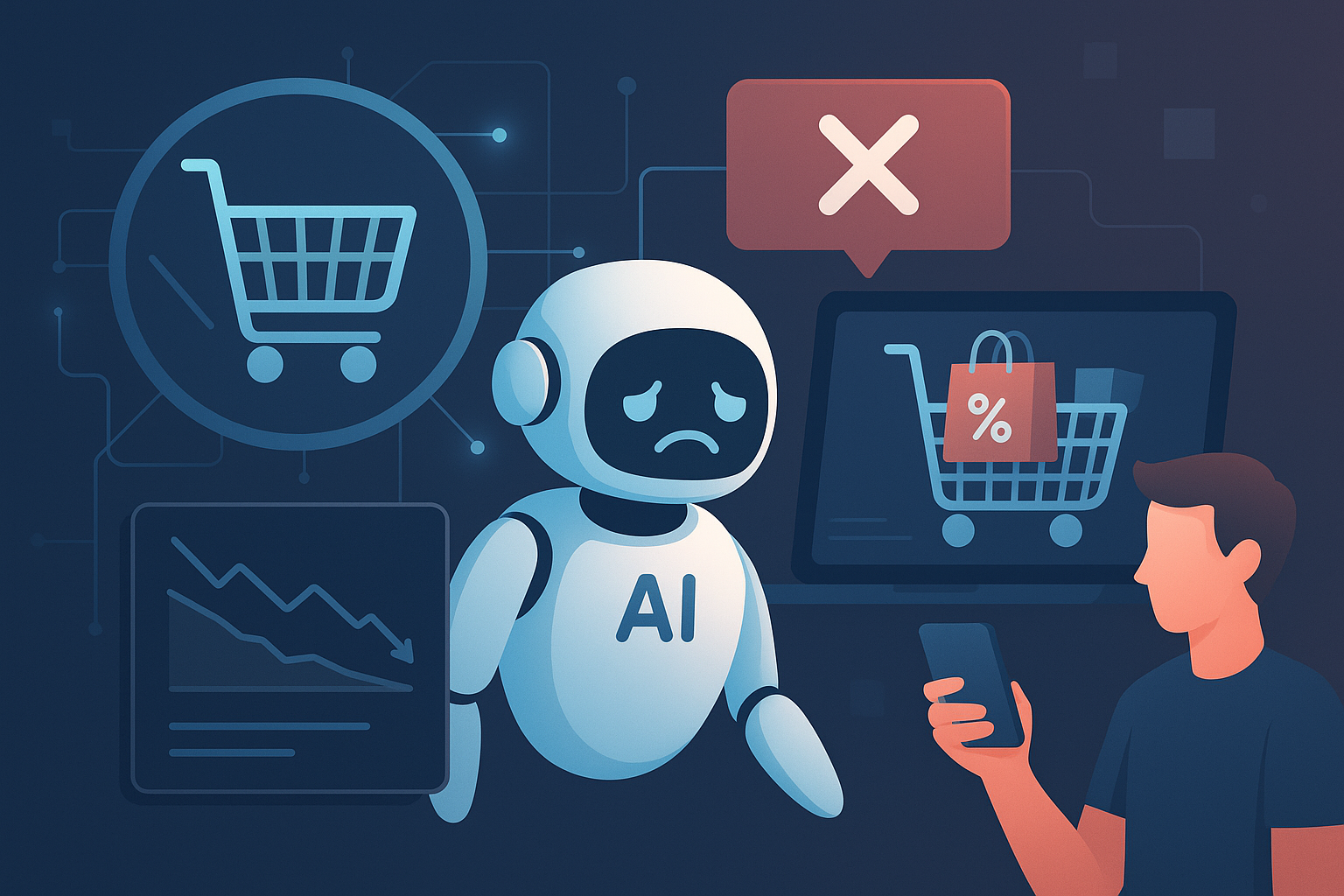Reducing Cart Abandonment When the Cart is Controlled by an AI Agent
As AI shopping agents increasingly control purchasing decisions, businesses must rethink cart abandonment strategies to re-engage both agents and the humans they represent.

Cart abandonment is a persistent challenge in e-commerce, impacting conversion rates and revenue. While traditional strategies focus on human psychology and behavior, the rise of personal AI shopping agents introduces a new dimension: what happens when the abandoned cart is controlled not by a human, but by an autonomous AI agent? E-commerce businesses need to adapt their AI-powered strategies for reducing cart abandonment to effectively re-engage when an AI agent is involved.
Traditional cart abandonment strategies for human shoppers include personalized email follow-ups, automated SMS campaigns, and behavior-driven pop-ups offering discounts or incentives. These methods rely on appealing to the human shopper's remaining interest or providing a nudge to complete the purchase. However, an AI agent doesn't respond to emotional appeals. Its abandonment might be due to different reasons:
Comparison Shopping:
The agent might have added items to the cart while comparing prices or options across multiple sites. If it found a better deal elsewhere, it would abandon the cart on your site. Dynamic pricing strategies need to account for price-comparing AI agents.
Technical Friction:
The agent might have encountered a technical issue during the checkout process, such as a navigation barrier, a parsing problem, or a security hurdle.
Strategy Adjustment:
The human user might have changed their requirements or abandoned the shopping task, causing the agent to stop its process.
Data Retrieval Issues:
The agent might be programmed to gather information on products or build a potential cart for later human review, not necessarily to complete the purchase immediately.
Reducing cart abandonment when an AI agent is involved requires adapting strategies to address these possibilities:
Identify Agent Abandonment Patterns:
Use analytics to distinguish between human-initiated abandonment and AI agent abandonment. This might involve analyzing the speed of interaction, the type of friction encountered, or the technical signature of the traffic. Bloomreach's dashboard allows monitoring metrics like cart abandonment rate to identify friction points. Data integration capabilities are crucial for gathering insights from various sources.
Optimize for Technical Smoothness:
Ensure that friction points known to affect AI agents, such as complex JavaScript, CAPTCHAs, pop-ups, and overly aggressive fraud detection, are minimized or eliminated, particularly in the checkout flow. Streamlining checkout flows is needed.
Data-Driven Re-engagement (Targeting the Human):
While the agent may have abandoned, the human user it represents might still be interested. Use AI-driven insights and customer segmentation to send personalized reminders or offers to the human user, referencing the products their agent added to the cart. This requires robust data integration to link agent activity to the human user's profile. AI can make these reminders personalized based on past behaviors and preferences.
Improve Product Data and Site Search for Agents:
Ensure that product information is complete, accurate, and easily parseable by agents. If an agent abandoned because it couldn't find or verify necessary information, improving data quality can prevent future abandonment. Optimizing product discovery and search for AI agents is key.
Adapt Dynamic Pricing:
For price-comparing agents, ensure your dynamic pricing strategy is competitive and visible.
AI-powered strategies are revolutionizing how brands address cart abandonment by enabling highly personalized experiences. By understanding the unique reasons behind AI agent abandonment and leveraging AI to optimize platforms, gather insights, and target human users effectively, businesses can work to reduce this new form of cart abandonment and boost conversions. Tools exist to help track what people (or agents) are doing on the store to identify friction points.